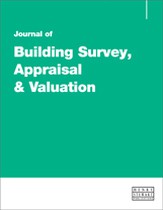Office-to-residential conversions under permitted development: De-regularising the planning system
Abstract
The Government's drive to reduce planning regulations and simplify the planning system is continuing with the urgent requirement to increase housing supply remaining a key driving force. A temporary permitted development right to allow the conversion of B1(a) office buildings to C3 residential has been in place since 30th May, 2013 and the Government recently consulted on proposals to make both this amendment to the General Permitted Development Order permanent and to introduce further rights to convert other commercial buildings to residential without the need for planning permission. There has been considerable resistance to the existing temporary amendment from Local Planning Authorities, and this is likely to continue as further changes come into force. Take up of the temporary permitted development right has varied, with some areas, such as the London Borough of Islington, being inundated with prior approvals while other areas, such as Cambridge, have seen little market interest. Permitted development right conversions should be approached positively as the intention of policy and law makers is crystal clear, but proper attention should be paid to the potential pitfalls of the prior approval process, particularly during the initial bedding-in period following further amendments to the General Permitted Development Order. The new permitted development rights do, however, present an excellent opportunity to significantly increase asset values, while avoiding the need to make the usual planning contributions associated with the normal planning permission process.
The full article is available to subscribers to the journal.
Citation
Derbyshire, Mike and Havers, Tim (2015, February 1). Office-to-residential conversions under permitted development: De-regularising the planning system. In the Journal of Building Survey, Appraisal & Valuation, Volume 3, Issue 4. https://doi.org/10.69554/NRKE9242.Publications LLP
